Turkish Delight, or Lokum, is a sweet, gummy candy that originated in Turkey and is popular throughout the Middle East. You can easily prepare this Turkish Delight Narnia Candy at home with my simple recipe! To enjoy it the traditional way, serve it with a hot cup of Turkish coffee.
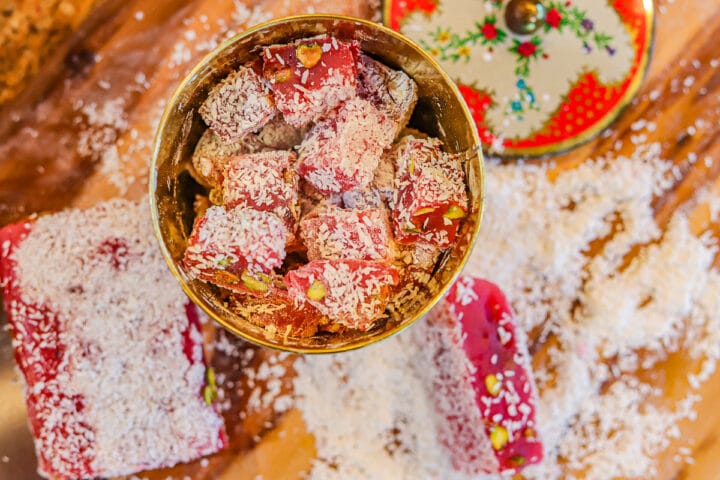
If you're familiar with C.S. Lewis' The Chronicles of Narnia, (The Lion, the Witch, and the Wardrobe, more specifically), then you might be familiar with this magical candy. In this story, the white witch gets Edmund to betray his siblings with this irresistible candy.
How fun would it be to watch this classic with your kids and surprise them with some Turkish Delight Narnia Candy? By the way, if you can find it, I recommend the cartoon version of the movie, it's my favorite!
In Turkey, you can find Lokum displayed in store windows, where it is available in a variety of flavors including strawberry, orange, raspberry, pomegranate, and lemon.

Jump to:
😍 Why You'll Love This Recipe
If you've tried to make Turkish delight candy in the past and were disappointed, you're in good company. Many complicated recipes call for using a candy thermometer while you boil the syrup until the syrup reaches the softball stage. The mixture is then mixed in with the cornstarch.
Over the years I've experimented with many Turkish delight recipes which were unsuccessful. Recently, however, someone shared a Turkish delight recipe that called for gelatin, which I hadn't tried adding to my previous recipes.
I decided to try making Turkish delight with the added gelatin and tossed in some cream of tartar for good measure. This seemed to do the trick. This Turkish delight recipe is pretty close to the real thing and easy to follow, so you should have success with it too!
🛒 What Goes into this recipe
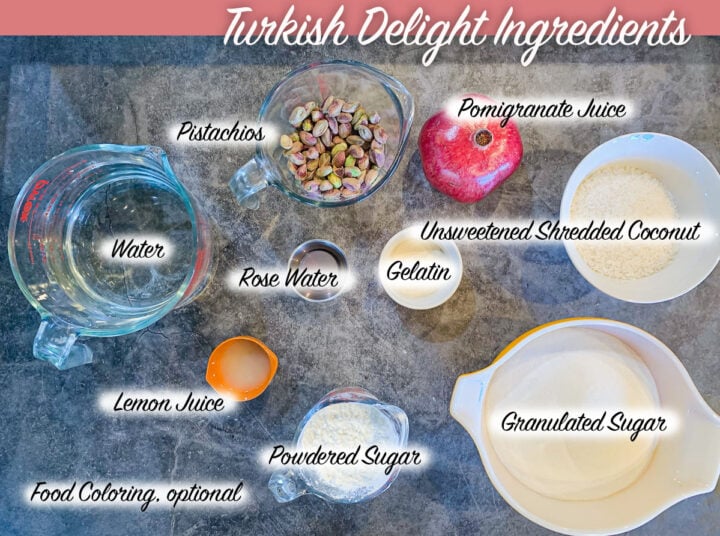
🔖 Ingredient & Substitutions
- Rose Water: Traditional Turkish Delight is flavored with rose water. Although we're using pomegranate juice for this recipe, I still like to sneak in some rose water to get that classic Lokum taste.
- Coconut: Sometimes Turkish Delight is rolled in a mixture of cornstarch and icing sugar, while other types are rolled in coconut. Unsweetened shredded coconut works best.
- Gelatin: Three packets (or 2 tablespoons) of unflavored gelatin are used in this recipe.
- Nuts: My recipe calls for pistachios, however, you can substitute hazelnuts, almonds, or walnuts.
🍬 How to make Turkish delight
Step 1: Prepare an 8" x 8" pan by lining it with parchment paper. Use enough paper to go up to the sides of the pan. Sprinkle some coconut on the parchment paper and set aside until needed.

Step 2: Measure and place your ingredients within easy reach. Add sugar, cornstarch, gelatin, and cream of tartar in a medium-sized saucepan. Whisk the cornstarch mixture to combine.
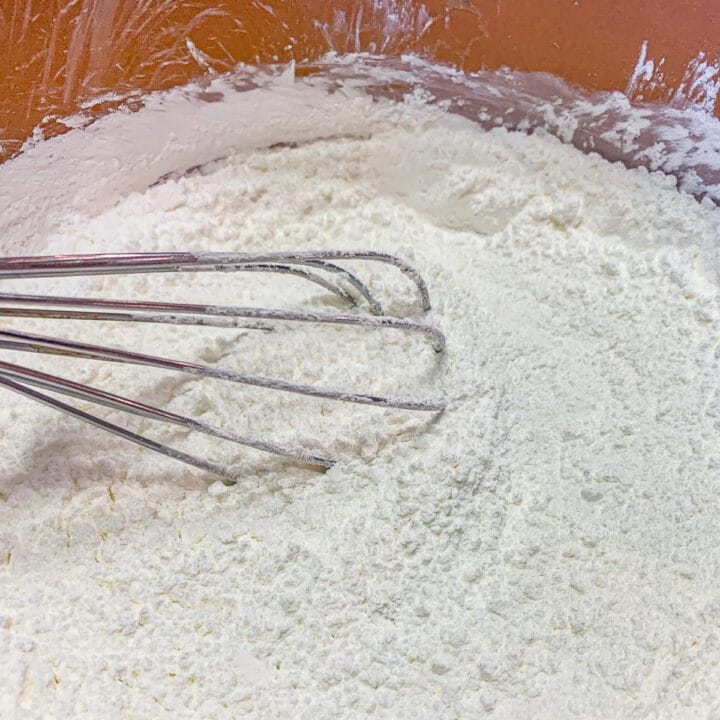
Step 3: Mix cold water and lemon juice in a large cup or bowl. Pour the liquid over the contents of the saucepan. Whisk quickly, to prevent lumps. Continue until smooth.
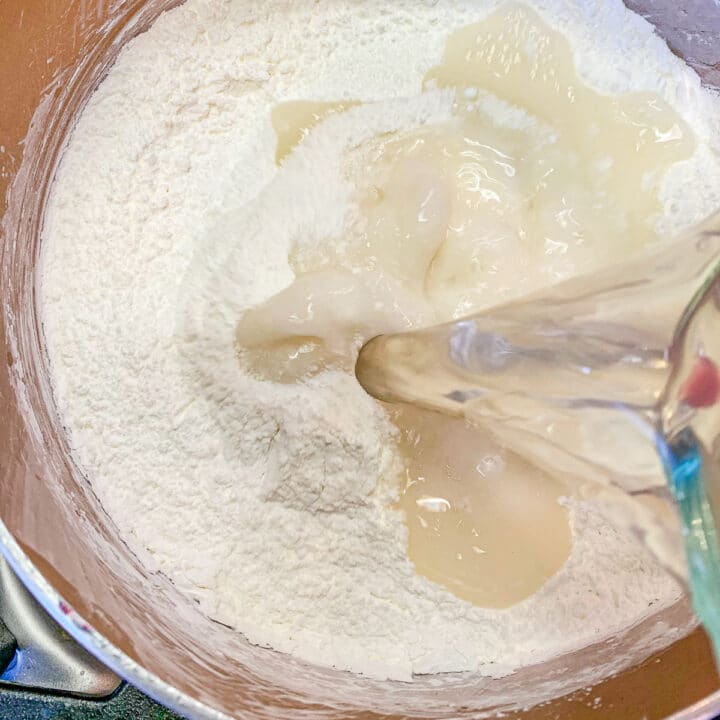
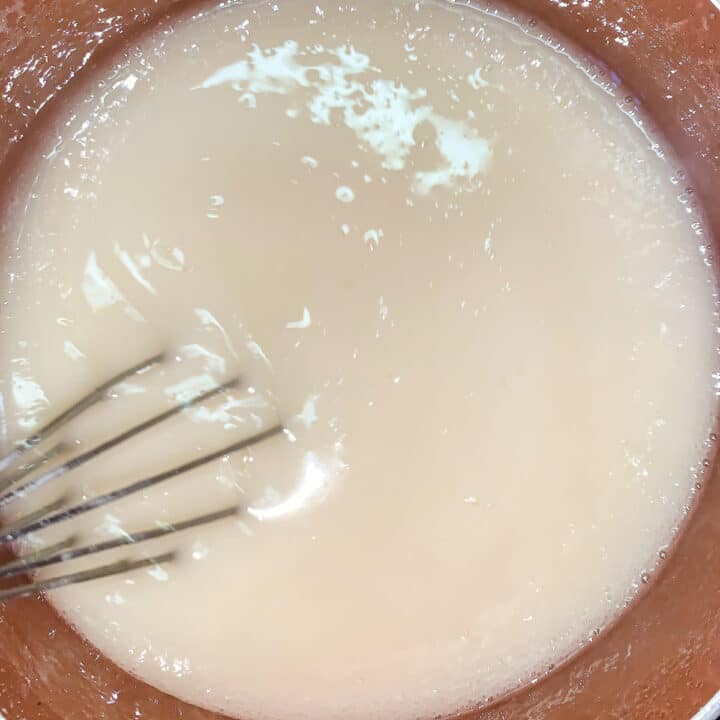
Step 4: Whisk, over low heat, until very thick. This should take approximately 30 minutes. Meanwhile, heat a pan on another burner and toast the shelled pistachios over low heat for a few minutes.
Would you like to save this recipe?
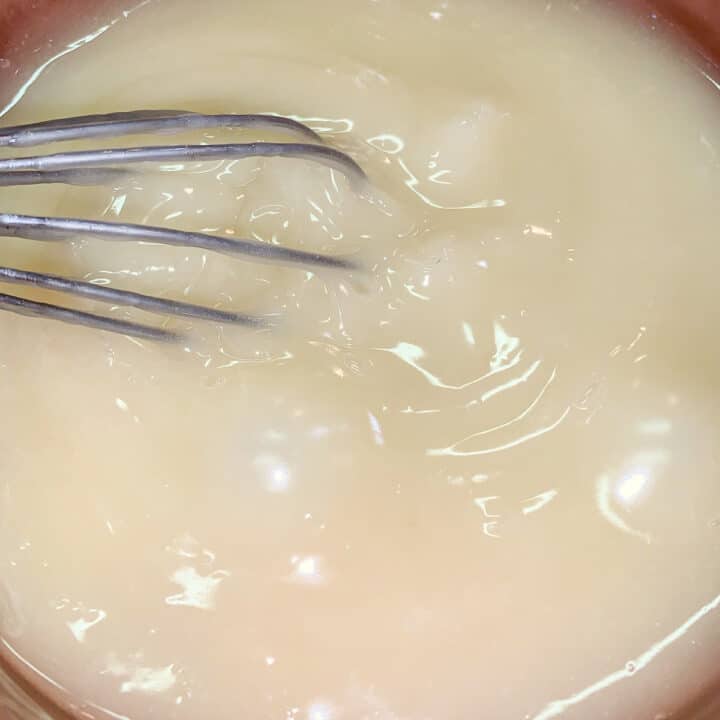
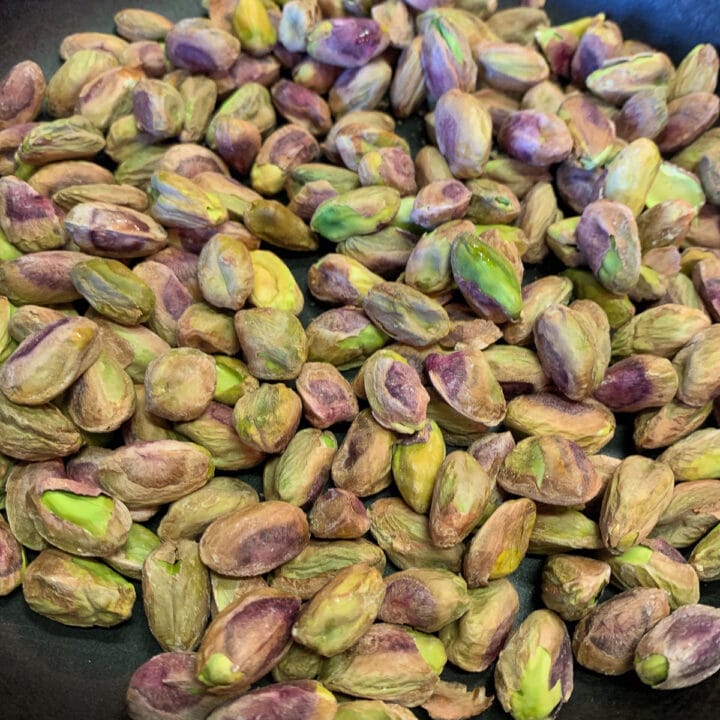
Step 5: After approximately 20 minutes of cooking, whisk the pomegranate juice and rose water into the pot. (If you prefer a deeper color add some red food coloring). If the mixture is too thick, you can use a spoon or a spatula to mix it. Stir continuously to prevent the bottom of the mixture from sticking to the pot.
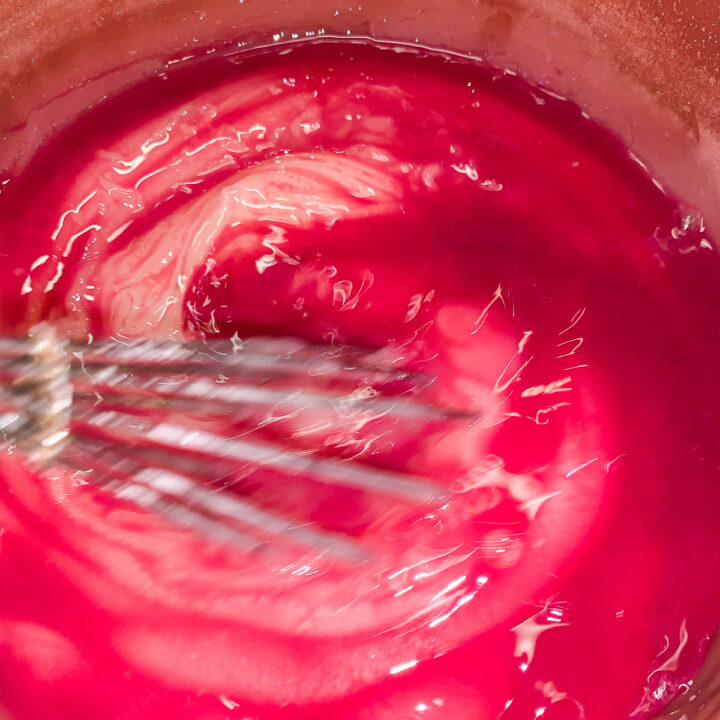
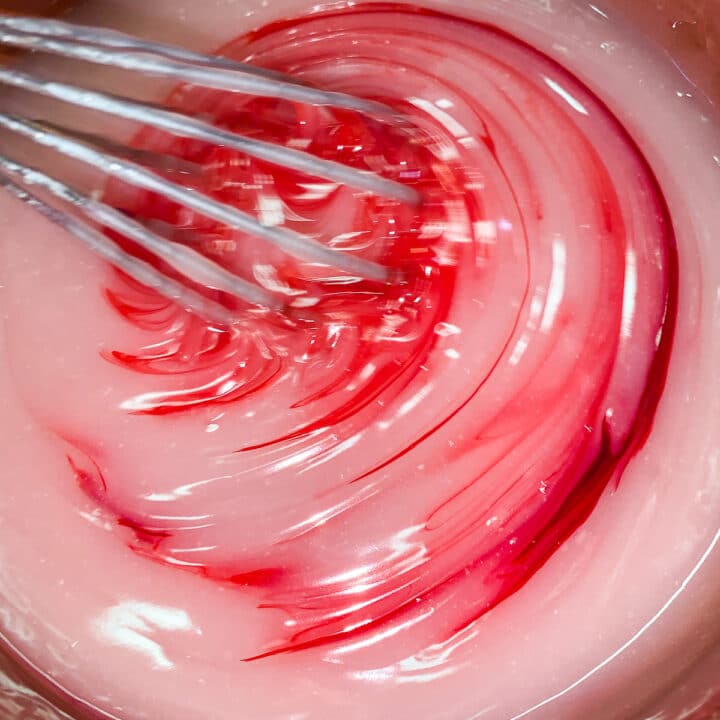

Step 6: The Turkish delight will start to bubble and eventually pull away from the bottom and edges of the pan. When this happens, stir nuts into the mixture and turn out into the prepared pan.
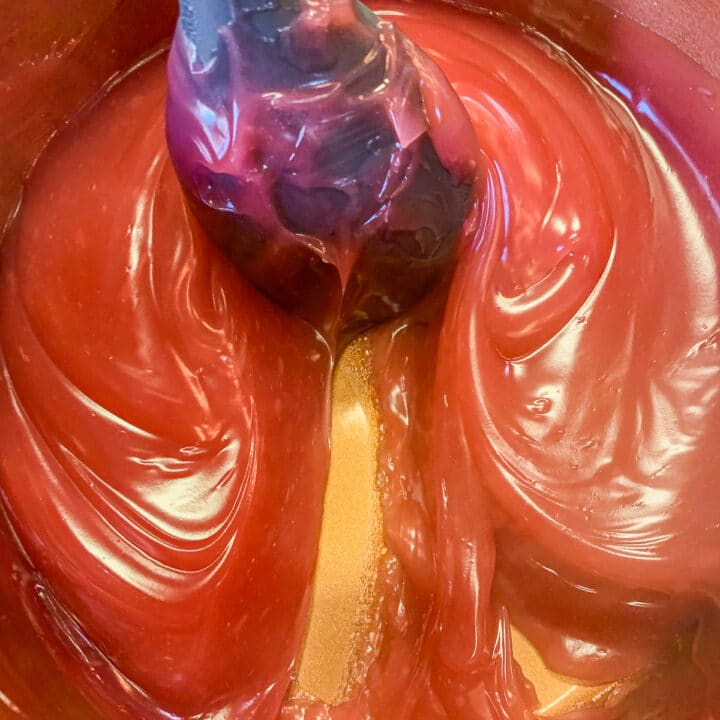
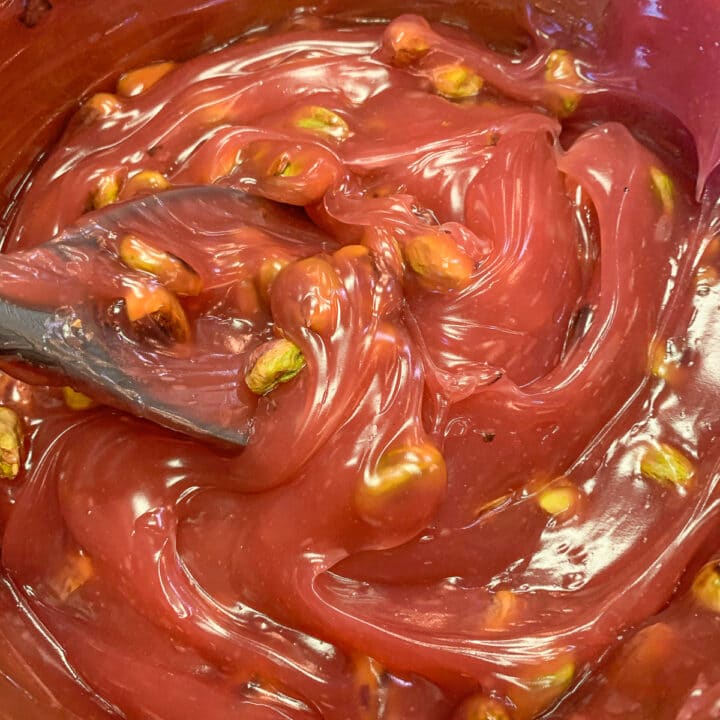
Step 7: Smooth the top of the Turkish delight with a spatula and sprinkle with coconut. Allow to set on the counter for approximately 8 hours or overnight.
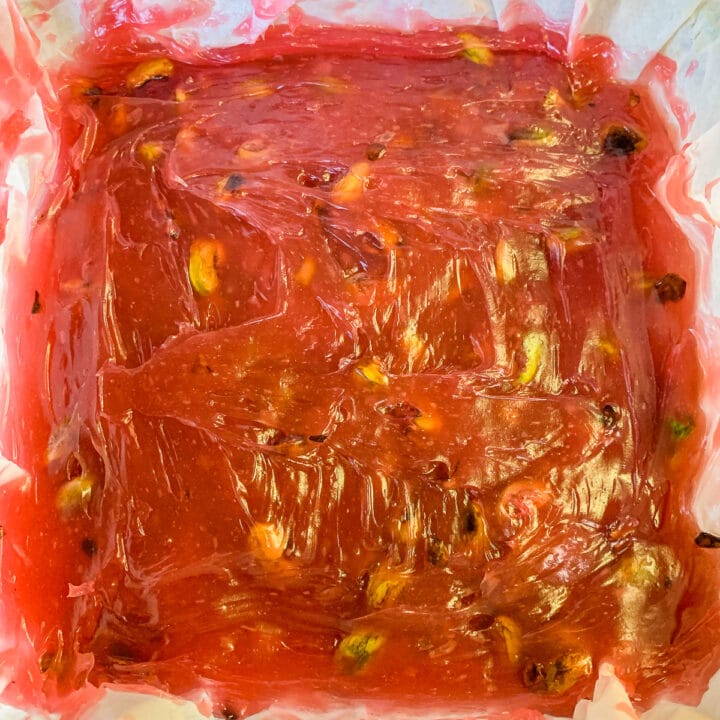

Step 8: Remove the Turkish delight from the pan by lifting the parchment paper out of the pan and flipping it onto a cutting board. Dust the cutting board with coconut and slice the Turkish delight into small cubes using a sharp knife or a bench scraper.
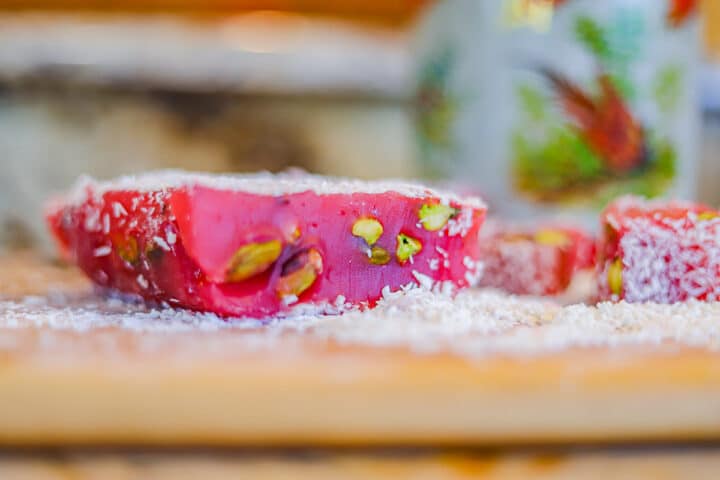
Step 9: Toss cubed Turkish delight with the remaining coconut to keep the pieces from sticking together. Store in an airtight container or wrap individually in plastic wrap.
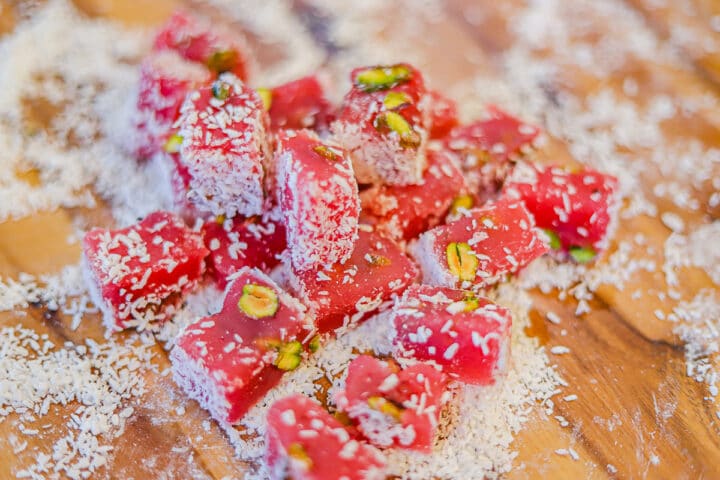
🤷🏻♀️ Recipe FAQs
Turkish delight is jellied candy that's sticky and sweet. It comes in a variety of flavors including mastic, orange, pomegranate, and vanilla, however, the most common flavor is rose water.
Sometimes Turkish delight is rolled in unsweetened coconut, but most commonly, cornstarch and powdered sugar mixture are used.
Do not refrigerate Lokum because it will begin to "sweat" and become too soft and sticky. Instead, store the candy in a tin can or an airtight container at room temperature.
Turkish delight is not associated with Christmas. In fact, it originated in Turkey, which is a Muslim country. This popular candy is often served with with Turkish coffee.
Turkish delight is fruity, sweet, tangy, and sticky. It's somewhat similar to jelly candy and comes in a variety of fruit flavors.
👩🏼🍳 Pro Tips
- Sometimes Mastic Gum, or (Gum Arabic) is used in Lokum recipes, which is a resin from the mastic tree. Mastic Gum comes in small chunks and as a powder and is used as a food stabilizer and a thickening agent in fillings, soft candy, and chewing gum. If purchasing the powder form of Gum Arabic, make sure the label reads "food safe" as some brands are used in crafting and may have other ingredients added.
- If you prefer a firmer texture, allow the cubed Turkish delight to sit out on the counter, uncovered overnight.
- Most often, Lokum is tossed in a mixture of cornstarch and confectioner's sugar, however, I prefer using coconut.
- Store in an airtight container in the fridge.

🍳 More Turkish Recipes
If you want to make an entire Turkish meal, here are some dishes to get you started!
🥮 Related Recipes
📖 Recipe

Easy Turkish Delight Narnia Candy | Lokum
Ingredients
- ¾ cup unsweetened shredded coconut (divided)
- 3 cups granulated sugar
- 1 cup corn starch (plus 2 tbsps)
- 3 packs gelatin (or 2 tablespoon gelatin)
- ½ teaspoon cream of tartar
- 2½ cups water
- 1½ tablespoon lemon juice
- ½ cup pomegranate juice
- 1½ tablespoon rose water
- 1½ cup pistachios (shelled and toasted)
Instructions
- Prepare an 8" x 8" pan by lining it with parchment paper. Use enough paper to go up to the sides of the pan. Sprinkle some coconut on the parchment paper and set aside until needed.
- Measure and place your ingredients within easy reach. Add sugar, cornstarch, gelatin, and cream of tartar in a medium-sized pot. Whisk to combine.
- Mix cold water and lemon juice in a large cup or bowl. Pour the liquid over the contents of the pot. Whisk quickly, to prevent clumping, until smooth.
- Continue to whisk, over low heat, until very thick. This should take approximately 30 minutes. Meanwhile, heat a pan on another burner and toast the shelled pistachios over low heat for a few minutes.
- After approximately 20 minutes of cooking, whisk the pomegranate juice and rose water into the pot. (If you prefer a deeper color add some red food coloring). If the mixture is too thick, you can use a spoon or a spatula to mix it. Stir continuously to prevent the bottom of the mixture from sticking to the pot.
- The Turkish delight will start to bubble and eventually pull away from the bottom of the pot. When this happens, stir nuts into the mixture and turn out into the prepared pan.
- Smooth the top of the Turkish delight with a spatula and sprinkle with coconut. Allow to set on the counter for approximately 8 hours or overnight.
- Remove the Turkish delight from the pan by lifting the parchment paper out of the pan and flipping it onto a cutting board. Dust the cutting board with coconut and cut the Turkish delight into cubes using a sharp knife or a dough scraper.
- Toss cubed Turkish delight with the remaining coconut to keep the pieces from sticking together. Store in an airtight container.
Notes
- Sometimes Mastic Gum, or (Gum Arabic) is used in Lokum recipes, which is a resin from the mastic tree. Mastic Gum comes in small chunks and as a powder and is used as a food stabilizer and a thickening agent in fillings, soft candy, and chewing gum. If purchasing the powder form of Gum Arabic, make sure the label reads "food safe" as some brands are used in crafting and may have other ingredients added.
- If you prefer a firmer texture, allow the cubed Turkish delight to sit out on the counter, uncovered overnight.
- Most often, Lokum is tossed in a mixture of cornstarch and confectioner's sugar, however, I prefer using coconut.

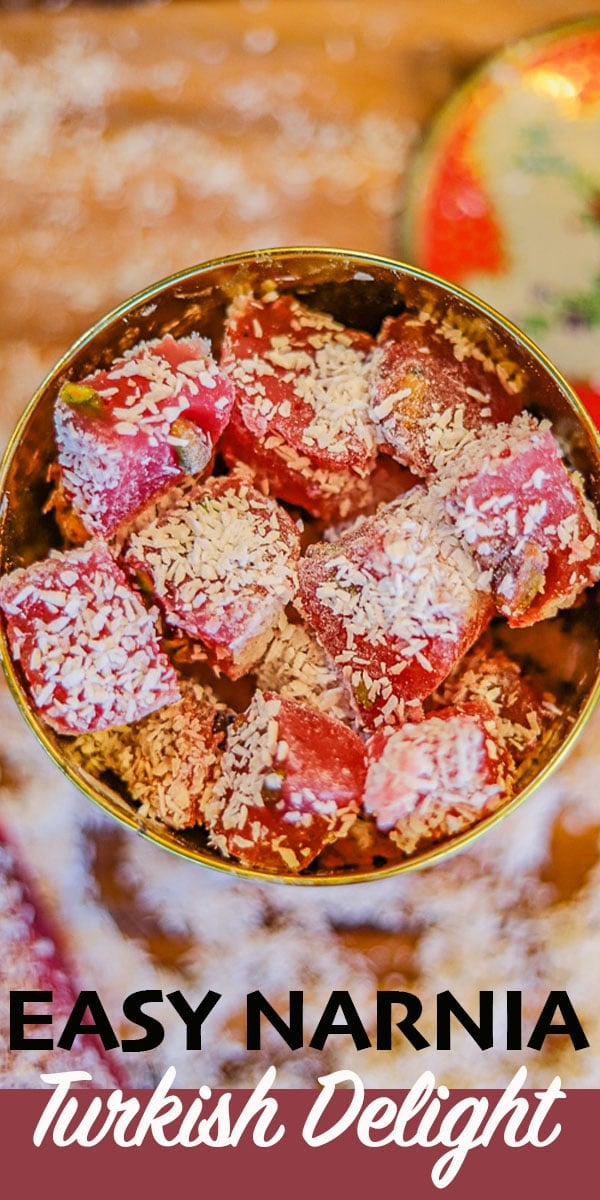
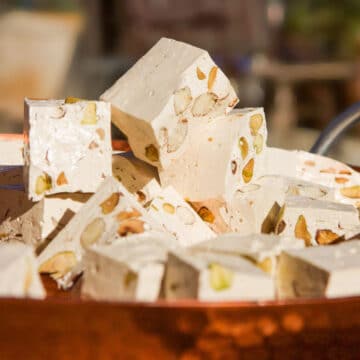

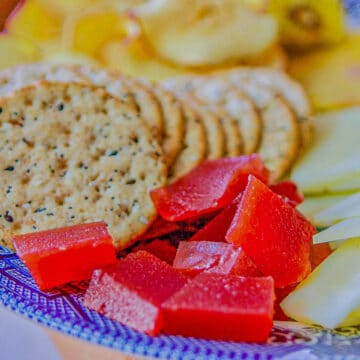


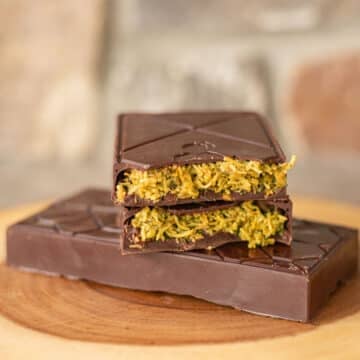

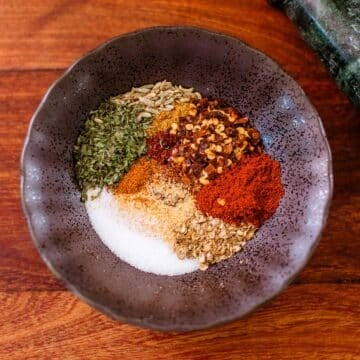
Comments
No Comments